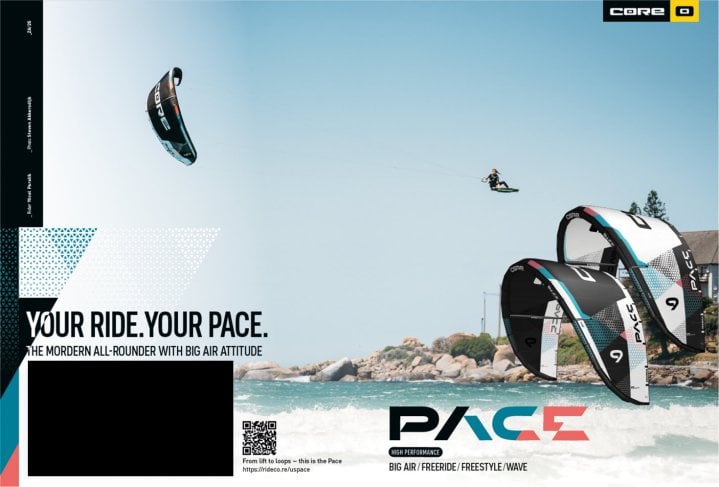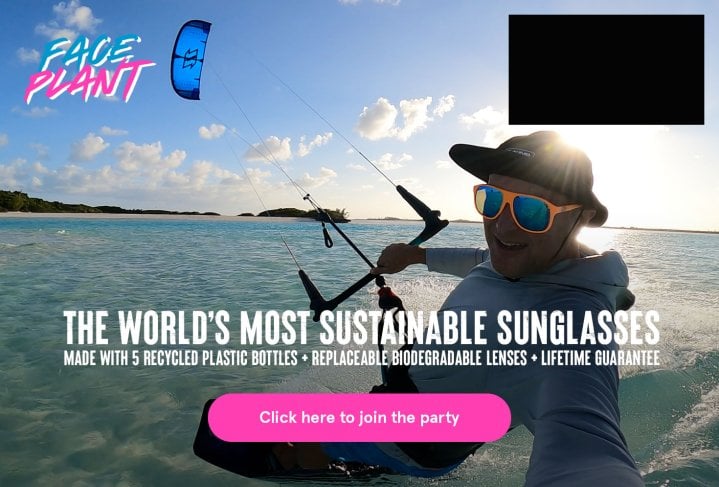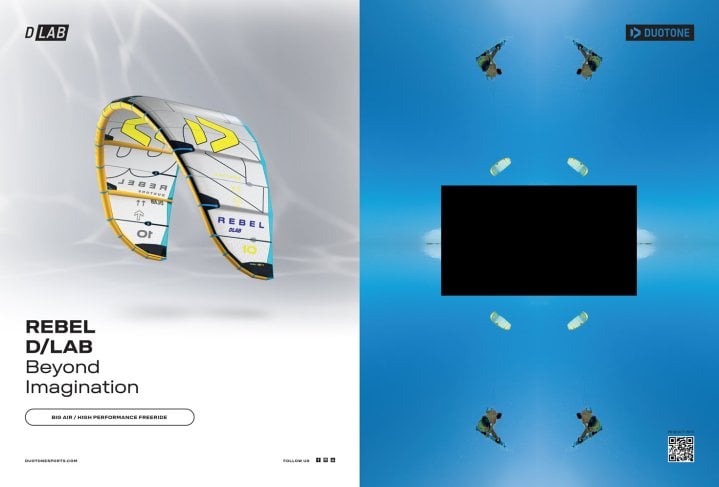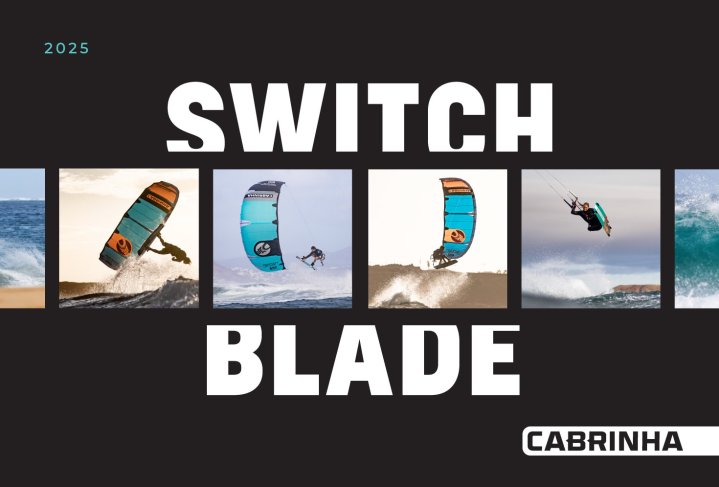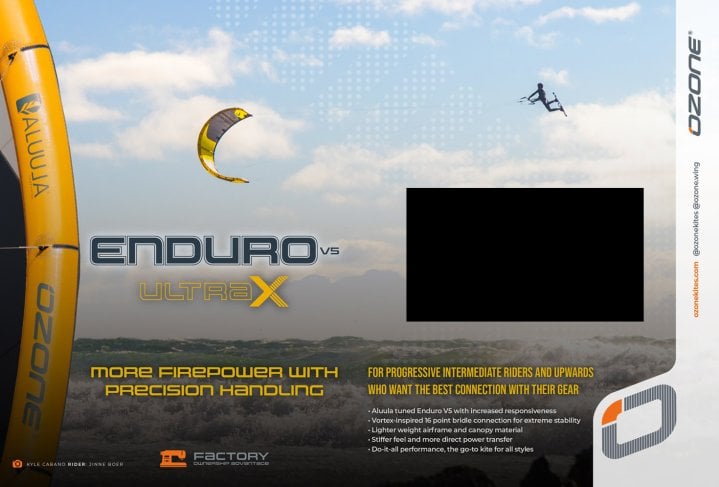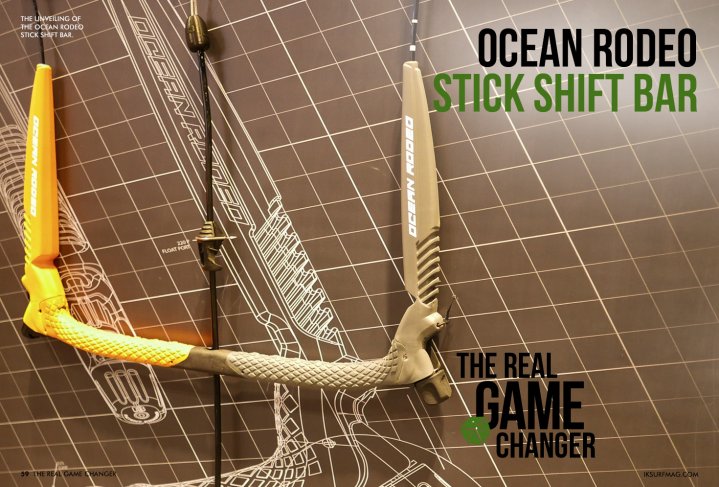
The Real Game Changer - Ocean Rodeo
Issue 59 / Thu 13th Oct, 2016
The second brand to bring a rear line trim system to market, and it’s not even on the shelves yet. Ocean Rodeo have spent five years developing the Stick Shift bar, it features some unique solutions to a problem some argue doesn’t exist, what will you make of it?
Ocean Rodeo launched their Stick Shift bar at Surf Expo, it’s not yet available for test but the finished product will be in shops soon. Online the launch was met with calls of “copy” with regards to North’s Click Bar. However, both systems are totally different in the way they trim the rear lines. Richard Myerscough worked with a small team for five years to develop the Stick Shift, we caught up with him to find out as much as we could…
You’re the second brand to come out with a rear line trim bar, is this a direction we will see all kite bars head in the future?
From a design perspective, front line trim has always presented problems we have had to work around. Trim systems on the front lines flap in the rider’s face; the weight tends to sink the front lines and can cause tangles with the rider in the water. The system is either out of reach or limits the overall potential throw of the bar; the cleat carries the bulk of the rider’s weight and so is awkward to adjust when fully powered; and, if the system fails the rider is left with a fully powered kite.
For all those reasons and for the simple desire for an uncomplicated, clean and efficient bar design I expect you will see many brands adopt back line trim.
However, it’s also important to look at things from the consumer’s point of view. It is our opinion that many riders won’t care if they are adjusting the front or back lines. They will simply care that their new Stick Shift bar is intuitive to use, is easily adjusted when riding and has a clean, ultra light design that is free of all the clutter and confusion of the older style bars.
Everyone is saying you copied North, but obviously, this has taken years to work on, what’s the story behind your bar and how long have you been developing it?
I think most consumers are smart enough to tell that this is a project that takes more than a few months to whip together!
The truth is, our company enjoys a long history of innovation within the industry. Our first patent - filed in 2001 - is now the default eject system for all kite control bars and we expect this innovation to have an equal impact on the industry.
We started design on the bar in 2010 when we partnered with RudoEnserink to address the design challenges. Rudo is the primary inventor, conceiving of the nudge winder and open channel bar. Ross Harrington and I contributed our own industry know-how and developed the idea with such novel additions as the rear line tensioner that ensures your back lines cleanly pay out when unspooled, even when the back lines are not under tension. As we neared completion, we elected to sub-brand the components as R3, a nod to each of our first names. A simple patent search will show patent applications for this project that date back to 2012.
The actual bar is really unique, it’s open at the bottom, can you tell us about that? Was it always the intention to make it open or did that develop from early prototypes?
At the start, we quickly identified that we would have a difficult time keeping sand and debris out of a closed unit and so the open U-shaped channel concept quickly emerged from the early sketches. Throughout the design process, we worked to keep wide operating tolerances for all parts to ensure the sand and debris could be quickly flushed out and that any lingering debris would not negatively affect the mechanics.
It was also important to us that the system is as mechanically simple as possible, ensuring easy in-the-field maintenance and repair and the open U-shaped design helped ensure consumers would be able to quickly inspect all the parts and easily replace and fix the bar should they need to.
That raises a good point - is this bar hard to service?
Not at all. The open U shape makes it easy to inspect your trim line, and if it needs replacement, the consumer simply needs to pop one set screw to drop the winder out of the bar to replace the trim line. We estimate the replacement parts will take less than 10 minutes to swap out for most consumers.
Your bar is visually quite different to North’s Click Bar, do you use a similar internal mechanism?
In fact, they are entirely different solutions. We do not have an internal mechanism; ours is an externally mounted winder in full view on the lower edge of our open U-shaped channel bar. Our winding mechanism is a unique and very simple pawl and cogged winding spool that offers the rider both power and depower with the same control knob.
Our system adds power in simple quarter turn increments where each complete turn of the knob equals about 2 cm of traditional front line trim power adjustment. Depowering can be slow and controlled with small nudges or rapid with a hard push and - crucially - does not require that the rider take his or her hand off the bar when attempting to depower. Additionally, our rear lines have a unique tensioner inside the bar floats that ensure even spooling of your lines when adjusting the trim on the beach or in situations where the kite is not tensioning the back lines for you.
What was the biggest challenge with the development of this product, aside from keeping it under wraps?
Our biggest challenge was the design and production of the channel bar. Finding the right design, materials and manufacturing partners to produce this part was very difficult and even then, once we settled on all of that we needed to ensure it would stand up to abuse. For this, we worked closely with the engineering department of Victoria’s Camosun College to do extensive destructive testing on the bar samples, providing the critical data we needed to refine this part to our design parameters.
What are the advantages for the riders with the Stick Shift Bar, and are there any disadvantages?
Our Stick Shift bar offers consumers a simple to use and understand bar that is easily adjusted even when fully powered. It offers a clean, clutter-free front line that affords virtually unlimited sheeting range and fewer parts to fail on these heavily loaded front lines. It shifts your trim adjustment closer to you, keeping it in reach at all times and allows the rider to keep both hands in control and on the bar when seeking to depower the kite in heavy winds.
It also removes potential safety hazards from your bar by ensuring there is less weight on the front lines to potentially sink your lines and tangle you in the water and ensures a tangle-free front line re-ride with every eject. Our unique back line tensioner provides smooth spooling of your lines even when the back lines lack tension.
When sailing the Stick Shift gives the rider the ability to make on-the-fly, micro adjustments to their kite’s trim without coming off their tack and without needing to look away from their point of sail as the trim adjustment is always within reach and in the same location.
Our unique, U-shaped open channel bar flushes all debris quickly and easily and offers the consumer quick in-the-field maintenance and repair options. Total trim line replacement is less than a 10 min job for most consumers.
As of now, we’ve not identified any negatives to our design, but we do recognise that the diversity of riding styles out there might demand slight variations on the bar design with future releases of the bar.
What is the warranty on the product like?
Our standard Ocean Rodeo warranty applies and - as with all our products - we offer a 60 Day Satisfaction Guarantee if you’re not entirely satisfied with your purchase we will buy it back from you!
Videos
By Rou Chater
Rou has been kiting since the sports inception and has been working as an editor and tester for magazines since 2004. He started IKSURFMAG with his brother in 2006 and has tested hundreds of different kites and travelled all over the world to kitesurf. He's a walking encyclopedia of all things kite and is just as passionate about the sport today as he was when he first started!


